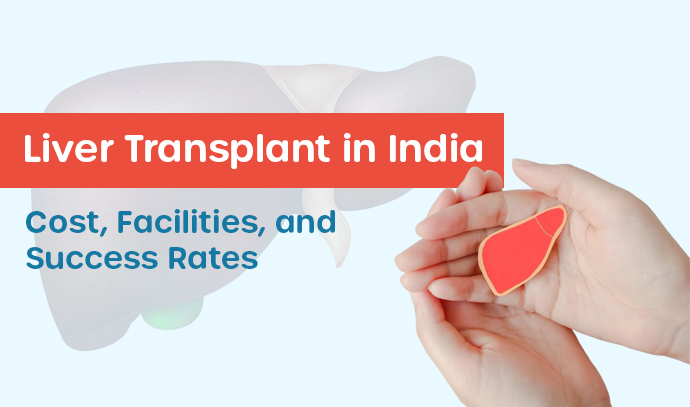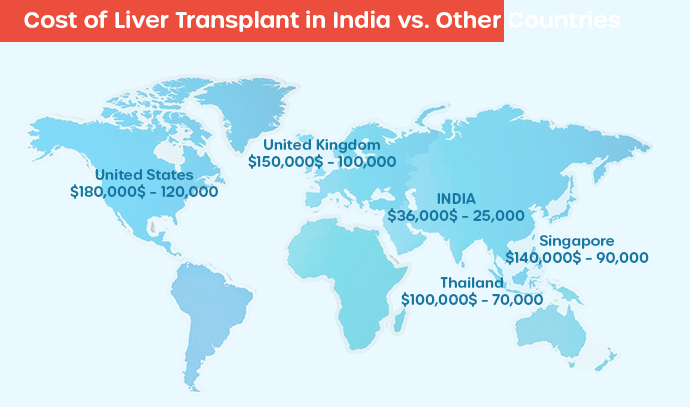How much does a liver transplant cost in India? How successful is it? And what facilities can you expect?
India offers one of the highest liver transplant success rates globally (85-95%), with costs starting from $25,000–$36,000, nearly 4-5 times lower than in the US or UK while offering advanced ICUs, NABH and JCI-accredited units, and multidisciplinary transplant teams.
At Shinon Healthcare, these aren’t just statistics, they are life changing results. With over 400 successful liver transplants coordinated across some of the best liver transplant hospitals in India, the focus is on precision, safety, and patient-first care. Living donor programs further reduce waiting times drastically, often allowing patients to progress from evaluation to surgery within weeks.
For families seeking affordability, trusted expertise, and seamless treatment facilities, India stands as a destination where cutting-edge healthcare meets hope. Keep reading to know everything about the liver transplant including cost, hospitals and expert care in India.
Types of Liver Transplants in India
From advanced living donor programs to complex surgeries, every liver transplant procedure is designed to maximize survival and recovery. What sets this apart is how seamlessly Shinon Healthcare connects patients to these advanced solutions ensuring not just treatment but the right treatment at the right time.
Here are the three key liver transplant procedures widely performed in India:
1. Living-Donor Liver Transplant (LDLT)
- What it is: A healthy donor, usually a family member donates a portion of their liver, which naturally regenerates to full function within 4-6 weeks.
- Why it matters: LDLT removes the unpredictable wait time. Patients can move from pre transplant evaluation to surgery in a few weeks which drastically reduces complications linked to delays.
In India, LDLT has emerged as a game changer, not just because it brings down overall liver transplant cost in India compared to deceased donor options, but also because it accelerates treatment timelines. Shinon Healthcare connects patients with leading liver transplant hospitals in India, where donor safety and high success rates are top priorities.
2. Deceased Donor Liver Transplant (DDLT)
- What it is: When a living donor is not an option, DDLT is performed using a liver from a deceased donor.
- Challenge: The waiting period depends on blood type and organ availability, sometimes ranging from days to several months.
Our early evaluation and coordination with top liver transplant hospitals in India ensure patients are listed promptly and fully prepared when a donor organ becomes available.
3. Domino Liver Transplant (DLT)
- What it is: It is a highly specialized technique where one donated liver saves two lives. The original recipient receives a new organ, while their functional but genetically affected liver is transplanted into another patient.
This advanced technique is not widely available worldwide, and is offered by select liver transplant hospitals in India, and Shinon Healthcare helps patients access centers with proven expertise in such rare procedures.
What makes India stand out is not just the availability of LDLT, DDLT, and DLT, but the way expertise, speed, and affordability come together to create exceptional outcomes. A leading liver transplant hospital in India offers advanced surgical technology and multidisciplinary teams that customize every patient journey for higher survival rates and faster recovery.
Liver Transplant Procedure, Recovery Timeline and & Patient Support
A liver transplant is a carefully planned journey that begins where medical expertise and patient support go hand-in-hand. Shinon Healthcare ensures that every step, from evaluation to full recovery, is backed by world-class coordination and compassion.
Step-by-Step Procedure
1. Pre Transplant Evaluation
The journey starts with detailed medical evaluations, diagnostic tests, and consultations to check eligibility. For patients with end-stage liver disease, this stage also involves donor screening (for LDLT) or listing for a deceased-donor transplant (DDLT).
2. The Surgery
- The liver transplant procedure typically lasts 6-12 hours involving the removal of the diseased liver and transplantation of a healthy donor organ.
- For living donor transplants, a segment of the donor’s liver is transplanted, and both livers regenerate naturally within weeks.
3. ICU & Hospital Stay
- Post surgery, patients are moved to a specialized ICU for 3-5 days for close monitoring.
- Most patients are discharged within 10-15 days, depending on recovery speed.
Comprehensive Patient Support by Shinon Healthcare
Shinon Healthcare goes beyond medical coordination by offering:
- Visa and travel assistance for seamless international access.
- Interpreter services to bridge language barriers.
- Accommodation arrangements for patients and families.
- End-to-end treatment assistance from diagnostics to post-op care under one trusted network.
Conclusion
A liver transplant is never just about the surgery, it’s about finding the right team, the right timing, and the right care environment to trust with your life. India has proven itself not only as a hub of medical expertise but as a place where complex procedures meet compassion, precision, and accessibility.
With Shinon Healthcare, you are not navigating this journey alone. You are backed by an experienced team that understands both the medical and emotional aspects of a transplant, ensuring that the focus stays on what matters most: getting you back to a healthy, active life.
Whether you’re exploring the liver transplant cost in Chennai or comparing treatment options across India, plan with precision and compassion with the help of Shinon Healthcare. Connect with us today!
FAQ’s
What criteria determine eligibility for a liver transplant?
Ans. Patients are evaluated using factors like MELD scores (Model for End-Stage Liver Disease), overall health condition, and the severity of liver disease. For liver cancer patients, criteria like the Milan criteria are often used to determine eligibility.
Who can be a living donor and how safe is the process?
Ans. Living donors are typically close relatives aged between 18-60 years, with compatible blood types and no major health issues. The process is considered safe, and the donor’s liver regenerates within a few weeks, allowing them to return to normal life within 3-6 weeks.
What are the risks and complications after liver transplant?
Ans. Potential risks include organ rejection, bile duct complications, infections, or side effects of immunosuppressive medications. These risks are minimized through continuous monitoring, specialized post-transplant care, and strict medical protocols.
How long is the hospital stay for recipients and donors?
Ans. Recipients generally stay in the ICU for 3-5 days, followed by 10-15 days in the hospital, depending on recovery speed. Donors typically have a shorter stay of 7-10 days.
Can I donate or receive another transplant if needed?
Ans. Yes, recipients can undergo a second transplant if the liver’s function declines over time. Donors, if medically cleared, can also donate other organs in the future.

